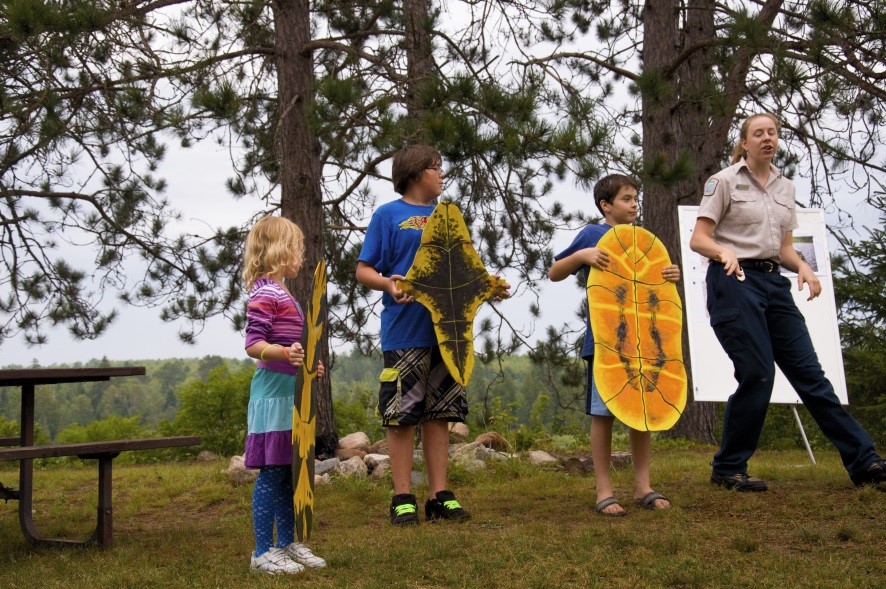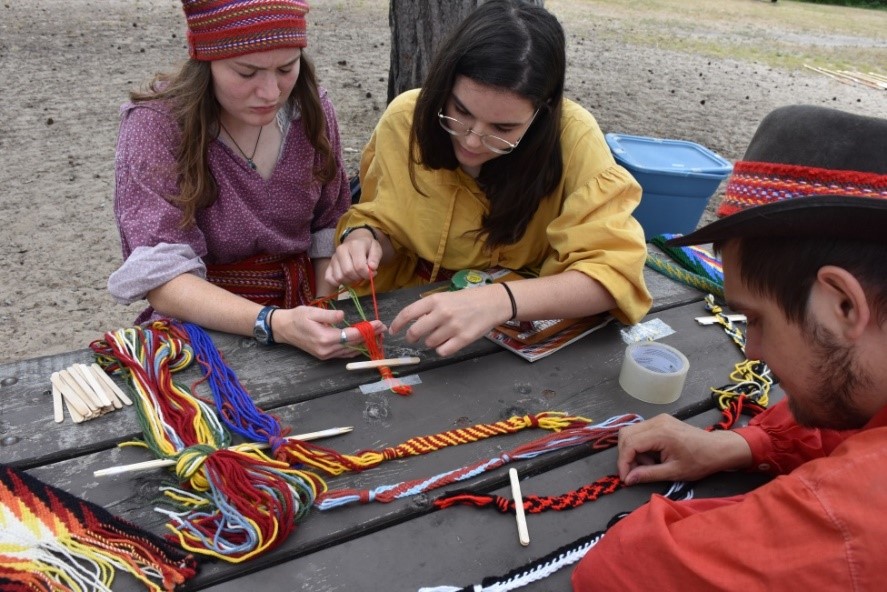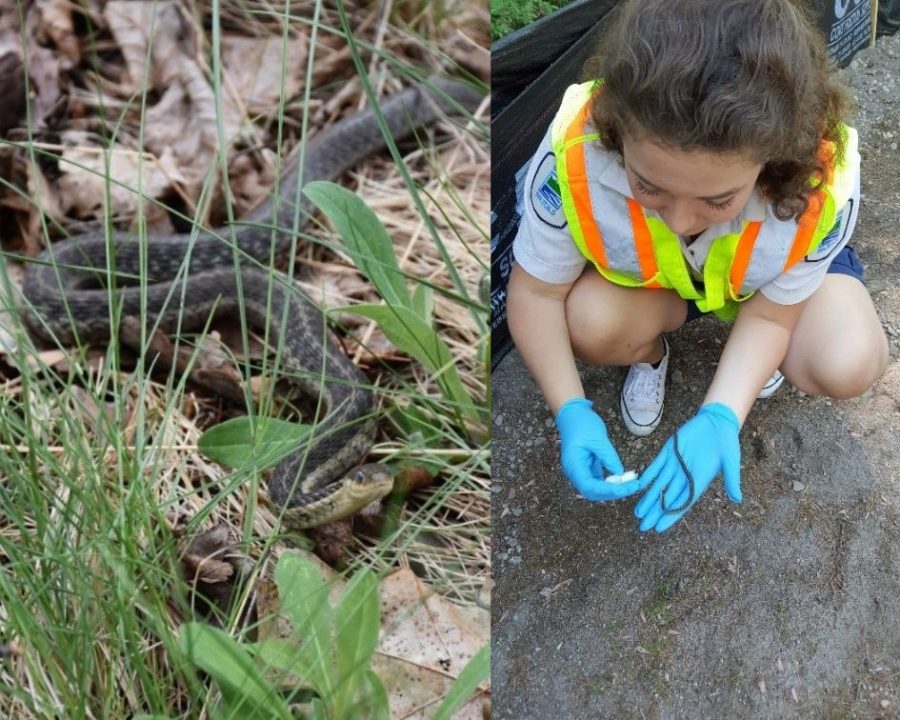
In our “Behind the Scenes” series, Discovery Program staff across the province share a “backstage” glimpse of their favourite programs and projects. Today’s post comes from Heather Stern, a Discovery Leader at Samuel de Champlain Provincial Park.
So you think you want to work with the Ontario Parks Discovery Program…
Every spring, while interviewing potential Discovery Program staff, someone inevitably asks, “What can I expect to do in this role?”
This is always a great question, but it can be difficult to answer. Every day will likely look slightly different, and your responsibilities will vary depending on the season.
At Samuel de Champlain, Discovery Program staff are responsible for organizing and leading Voyageur Adventure Tours, staffing the Mattawa River Visitor Centre, researching, writing, and presenting different types of interpretive programs, and helping with species-at-risk monitoring and invasive species removal, just to name a few.
~
Guiding in the Visitor Centre
Guests who visit the park can come from all over the world, and the Visitor Centre provides an informal setting to get to know them.
In the Visitor Centre, we get asked a wide array of questions, from the simple “where do I register for my campsite?” to the specific “I’m studying lichen. Can you tell me the best place to find Cladonia asahinae?” to the curious “can other animals get poison ivy?” (none of the animals found in Ontario Parks, but possibly a few species of primates).
Knowing where to find the answers to these questions is a skill Discovery staff learn very quickly!
~
Paddling like it’s 1796
Voyageur Adventure Tours are a unique aspect of the job at Samuel de Champlain. It is the only provincial park that offers the opportunity to paddle a 28-foot replica canot de maître (master’s canoe) on a historical fur trade route.

To be able to run these tours, Discovery Program staff must learn the information, become certified canoeists, and be able to back-up a 30-foot trailer into some tight spots!
Dressing up in traditional Voyageur costumes and singing French paddling songs is highly encouraged.

~
Discovering can be fun
Programming is a large part of our job.
Programs can take the form of a guided hike, a table with props for guests to drop-by and investigate, a campfire, a program geared towards children with lots of games and activities, an illustrated talk, art in the park, a musical! The list goes on.

Each of these programs have been researched and written by Discovery Program staff in our parks. The skills and information Discovery Program staff learn while creating these educational experiences for guests lead them to become experts on the topics of their choosing.

We try to develop programs that are both entertaining and informative. There is nothing more satisfying than watching a visitor beam with pride after making their own voyageur sash using finger weaving.
Or seeing the wonder on a kid’s face after they witnessed a dragonfly emerging from their nymph exoskeleton. These moments of joy, discovery, and inspiration are what we aim for in each program.

~
Protecting the most vulnerable
In the spring and early summer, Discovery Program staff here participate in turtle monitoring. Every evening several staff will go out to known turtle locations to check for nesting turtles.

These could be Midland Painted Turtles, Snapping Turtles, or Blanding’s Turtles. If the turtle is on the road, we gently move it out of harm’s way, in the direction it was travelling. If the turtle has laid eggs, we then cover the nest to try to limit predation (racoons and foxes looking for a midnight snack).
This year, we are also contributing to a snake monitoring program to study Snake Fungal Disease (SFD) and its prevalence throughout the province.

Any snake we come across in the park will be swabbed for the fungus and released. The swabs are then sent to a lab for testing to determine how far SFD has spread.
As the summer progresses, staff spend some evenings by old buildings with bat detectors, monitoring for different species of bats that may be roosting in the area.

If there’s a cabin or work building with bats roosting, Discovery Program staff may use their carpentry skills to build bat boxes as safe places outside of our buildings.
~
Bye, bye, bye (invasives)!
Another aspect of the Discovery Program staff job is monitoring and possibly removing invasive species. These are species that have been introduced to an area (often by people) and are having a negative impact on their new environment.

Step one for Discovery Program staff is learning to identify invasive species. Is it an Asian Long-horned Beetle or is it the native Pine Beetle? Is it Purple Loosestrife or the native Fireweed? Once staff know how to identify invasive species we can monitor where it is in the park and possibly remove it!
~
Always something different
So as a Discovery Program staff, you might spend one day taking guests on a hike through an old growth forest and the next day have a toad pee on you as you try to show it to a group of hikers. You might spend 45 minutes on a trail trying to identify a bird song or get covered in paint assisting in an Art in the Park afternoon.

Every day is different. And while I always try to answer the question “what can I expect to do in this role” as fully as possible, at the end of every summer, inevitably I get told “this job was not what I expected, but I loved it!”


